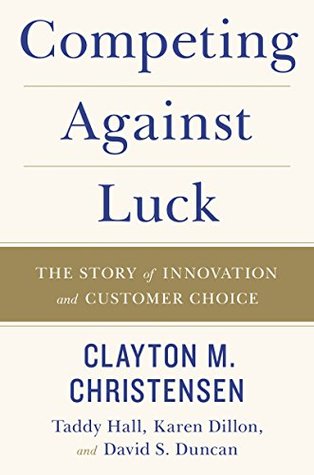More on this book
Community
Kindle Notes & Highlights
Read between
September 18 - September 28, 2020
Companies don’t think about this enough. What has to get fired for my product to get hired? They think about making their product more and more appealing, but not what it will be replacing.
A customer’s decision-making process about what to fire and hire has begun long before she enters a store—and it’s complicated. There are always two opposing forces battling for dominance in that moment of choice and they both play a significant role.
The forces compelling change to a new solution: First of all, the push of the situation—the frustration or problem that...
This highlight has been truncated due to consecutive passage length restrictions.
The forces opposing change: There are two unseen, yet incredibly powerful, forces at play at the same time that many companies ignore completely: the forces holding a customer back. First, “habits of the present” weigh heavily on consumers. “I’m used to doing it this way.” Or living with the problem. “I don’t love it, but I’m at least comfortable with how I deal with it now.” And potentially even more powerful than the habits of the present is, second, the “anxiety of choosing something new.” “What if it’s not better?”
Loss aversion—people’s tendency to want to avoid loss—is twice as powerful psychologically as the allure of gains, as demonstrated by Kahneman and Amos Tversky.
The original goal involves establishing a timeline of all the triggers that actually led to the eventual decision. Walker might appear to be an impulse purchaser. But the backstory that is established, through what might seem to be irrelevant questions, reveals something far more complex.
New products succeed not because of the features and functionality they offer but because of the experiences they enable.
I have found that creating the right set of experiences around a clearly defined job—and then organizing the company around delivering those experiences (which we’ll discuss in the next chapter)—almost inoculates you against disruption. Disruptive competitors almost never come with a better sense of the job. They don’t see beyond the product.
It turned out this added to the experience, turning a trip to the American Girl store into a special day out with mom (or dad). American Girl stores have doll hospitals that can repair tangled hair or fix broken parts. Some of the stores have restaurants in which parents, children, and their dolls can happily sit and be served from a kid-friendly menu—or host birthday parties. The dolls become the catalyst for experiences with mom and dad that will be remembered forever.
Organizations that focus on making the product itself better and better are missing what may be the most powerful causal mechanism of all—what are the experiences that customers seek in not only purchasing, but also in using this product? If you don’t know the answer to that question, you’re probably not going to be hired.
Businesses now have to consider how to educate customers about what job these products and services are designed to do2—and when potential customers should not consider hiring them. That is a new wrinkle.
Whatever anxieties I might have had navigating that visit—“Will I see everyone today? Is it going to take two months for a follow-up? Does my insurance cover this extra appointment?” and so on—were eliminated before they could even form into a thought in my mind. On the surface, the Mayo Clinic is organized around the specialties of the doctors, like many other health organizations. But really, the main organizing principle is a process to get the right things in the right sequence to get the job done.
When you think of the word “process” you might instantly conjure images of a manufacturing assembly line or a bureaucratic standard. But processes touch everything about the way an organization transforms its resources into value: the patterns of interaction, coordination, communication, and decision making through which they accomplish these transformations are processes.
Resources, generally speaking, are fungible. They can be bought and sold. Products can, often, be easily copied. But it is through integrating processes to get the job done that companies can create the ideal experiences and confer competitive advantage.
Processes are invisible from a customer’s standpoint—but the results of those processes are not. Processes can profoundly affect whether a customer chooses your product or service in the long run. And they may be a company’s best bet to ensure that the customer’s job, and not efficiency or productivity, remains the focal point for innovation in the long run.
W. Edwards Deming, father of the quality movement, may have put it best: “If you can’t describe what you are doing as a process, then you don’t know what you are doing.”
Processes are often hard to see—they’re a combination of both formal, defined, and documented steps and expectations and informal, habitual routines or ways of working that have evolved over time. But they matter profoundly. As MIT’s Edgar Schein has explored and discussed, processes are a critical part of the unspoken culture of an organization.
Unlike resources, which are easily measured, processes can’t be seen on a balance sheet. If a company has strong processes in place, managers have flexibility about which employees they put on which assignments—because the process will work regardless of who performs it.
SNHU tracks how many minutes it takes to respond to an inquiry, for example, because it realizes that time is critical to the process of its online prospects. Amazon focuses on when orders are delivered not when they are shipped. For each new product, Intuit develops a unique set of performance metrics based on the specific customer benefit that the specific Intuit solution delivers.
Creating the right metrics is hard. But so important.


